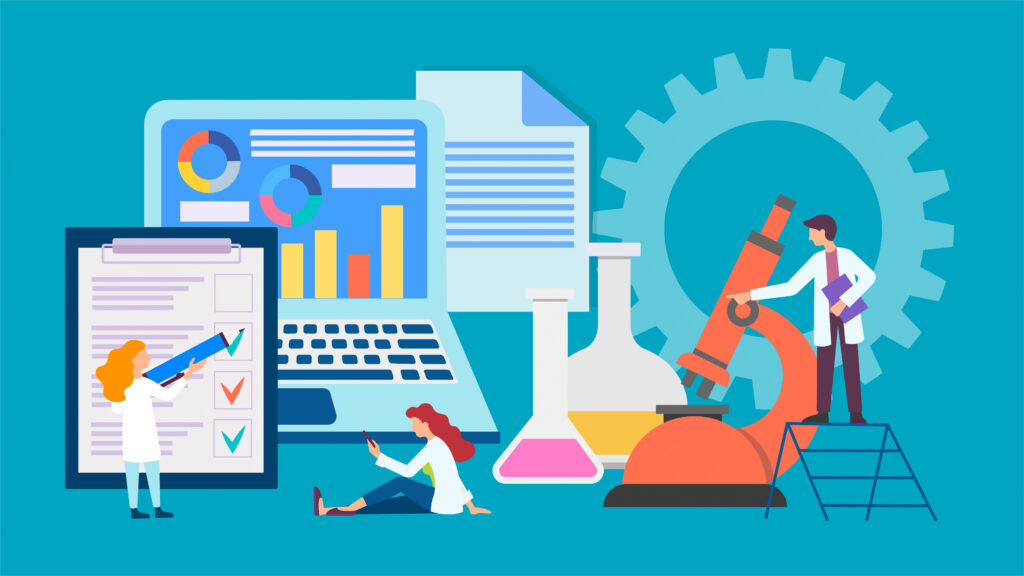Laboratory Information Systems (LIS) are crucial for optimizing patient care by facilitating correct data management, expediting operations and so forth. But improving these systems necessitates a thorough comprehension of the underlying operations. With the aim of providing healthcare professionals and organizations with increased productivity and efficiency, we’ll explore the complexities of workflow analysis in LIS systems via this blog.
The Importance of Workflow Analysis in LIS
Laboratory Information Systems (LIS) provide the foundation for effectively managing laboratory activities in the complex healthcare environment. But it’s not enough to just put a LIS in place; you also need to make sure that it integrates well with current processes. Workflow analysis becomes a crucial procedure at this point.
- Optimizing Efficiency: Sample collection through result reporting is only one of the many processes that make up a laboratory’s workflow. By means of thorough analysis, it is possible to identify and address inefficiencies or bottlenecks, resulting in more efficient processes and faster turnaround times.
- Improving Accuracy: Errors in laboratory procedures can have detrimental effects on patient care. By identifying possible weak areas in a workflow, through sample tracking or manual data input, workflow analysis makes it possible to put safety measures in place that reduce mistakes and increase accuracy.
- Resource Utilization: Staff, equipment and reagents are just a few of the resources that laboratories frequently struggle with. Organizations may optimize resource allocation through process analysis, ensuring that resources are used effectively without sacrificing care quality.
- Adapting to Change: New technology, laws and patient care procedures are always changing in the dynamic healthcare contexts. By using workflow analysis, labs may efficiently adjust to these changes and maintain the LIS’s alignment with both industry standards as well as corporate objectives.
Workflow analysis is really about raising the standard of patient care generally, not only about increasing the effectiveness of laboratory operations. Healthcare businesses may see measurable benefits in patient outcomes and operational efficiency by devoting time and resources to comprehending as well as enhancing workflows within LIS settings.
Understanding Workflow in the Lab
Sample Collection to Reporting
Accurate patient diagnosis and treatment depend heavily on the Laboratory Information Systems (LIS) workflow from sample collection to reporting. The process entails the following:
- Samples are electronically gathered and requisitioned, guaranteeing precise patient and test data recording.
- Transport and Accessioning: Barcode technology is used to transport and mark specimens, making identification as well as integration into the LIS more efficient.
- Processing and Analysis: Samples are processed and analyzed automatically. Real-time monitoring and result capturing are made possible by the integration of LIS.
- Verification and Reporting of Results: To facilitate prompt patient treatment, results are meticulously confirmed and electronically submitted to healthcare practitioners.
In LIS contexts, streamlining these processes improves accuracy, efficiency and patient care in the end.
Challenges in LIS Workflow Management
Managing processes in Laboratory Information Systems (LIS) presents a number of difficulties such as:
- Integration: There may be data interchange problems when integrating LIS with other systems due to its complexity.
- Data Integrity: The quality of the data is susceptible to human error and inconsistent format.
- Workload Balance: Staffing shortages and fluctuating volumes upset the balance of the workflow.
- Regulation Compliance: Adhering to CLIA and HIPAA requirements necessitates ongoing attention to detail.
- Technology constraints: Functionality is limited by obsolete systems or insufficient training.
- Change management: To prevent interruptions during the transition to new systems, meticulous preparation is necessary.
Workflow Analysis Process
Observation and Documentation
Observation and documentation are fundamental bases in the complex process of laboratory operations, helping to pinpoint process bottlenecks and inefficiencies. Now let’s examine how these procedures are vital to the optimization of Laboratory Information Systems (LIS) settings:
- Real-time Monitoring: A thorough understanding of the rhythm of laboratory operations may be gained by continuously observing the workflow processes. Laboratories are able to detect regions of congestion or inefficiency in real time by monitoring staff workflow patterns, sample movement and instrument use.
- Data Gathering and Analysis: Strict documentation procedures guarantee that each step of the workflow is painstakingly documented and examined. Labs can identify bottlenecks as well as the underlying causes of inefficiency by gathering thorough data on anything from specimen delivery times to processing delays.
- Workflow Mapping: By using visual tools like flowcharts or process maps to document the workflow, you may get a full picture of the entire process from sample collection to reporting. Stakeholders can see how the work is moving, recognize dependencies and find hidden inefficiencies using this perspective.
- Performance Metrics: Objective evaluation and benchmarking are made possible by establishing key performance indicators (KPIs) and metrics for process efficiency. Laboratory technicians are able to monitor their progress over time and determine areas that require improvement by measuring indicators like turnaround times, mistake rates as well as resource usage.
Identifying Bottlenecks and Inefficiencies
In order to make things go more smoothly, laboratories can highlight these issues by doing the following:
- Root Cause Analysis: When faced with delays or bottlenecks, it is crucial to carry out an exhaustive root cause analysis. Labs can apply focused remedies to deal with the main problem by researching more into the fundamental causes of the backlog.
- Process optimization: Reducing redundancies and simplifying procedures may ease bottlenecks and boost productivity all around. Workflow redesign, standardization and automation are effective methods for streamlining operations aside from cutting down on cycle times.
- Resource Allocation: Workflow bottlenecks can be made worse by understaffing or a lack of equipment. Laboratories can reduce bottlenecks and guarantee more efficient operations by carefully assigning resources according to workload needs as well as prioritizing essential activities.
- Continuous Improvement: Optimizing workflows is a continuous process rather than a one-time occurrence. Adopting a continuous improvement mindset promotes innovation, proactive problem-solving and flexibility in response to changing conditions.
Using proactive problem-solving techniques, documentation and observation, laboratories may detect if not resolve inefficiencies including bottlenecks, facilitating the development of a more productive as well as efficient workflow in LIS contexts.
Strategies for Workflow Improvement
Process Redesign
Process redesign is a prominent driver of improvement in Laboratory Information Systems’ (LIS) efficiency efforts. This is a brief summary of its effects:
- Finding Inefficiencies: Inefficient processes are cited by 70% of laboratories as a major difficulty, according a Health Data Management survey. Analyzing current processes to identify bottlenecks and potential improvement areas is the first step in process redesign.
- Streamlining Procedures: Laboratories can maximize efficiency by rethinking operations. Laboratory test turnaround times were shown to be 20% faster as a consequence of process reform initiatives, according to research published in the Journal of Clinical Pathology.
- Utilizing Technology: It’s critical to integrate automation technology. According to research by Kalorama Information, the need for increased productivity as well as efficiency will propel the global market for laboratory automation systems, which is expected to reach $5.1 billion by 2025.
Technology Integration
LIS settings must adopt cutting-edge technology if they want to increase efficiency. Here are a few samples:
- Automation: Automation minimizes mistakes and speeds up turnaround times by reducing the need for manual involvement. Sixty-one percent of laboratories rank automation as their top goal for streamlining process, according to a Dark Daily poll.
- RFID and Barcode Technology: Using these technologies improves inventory control and specimen tracking. 84% of healthcare institutions, according to a HIMSS Analytics research, think that barcode technology has increased patient safety.
- Interoperability: Solutions for LIS that are interoperable with EHR systems facilitate data interchange. According to a Black Book Market Research survey, 94% of hospitals want to spend money on interoperability solutions to increase the effectiveness of their workflow.
In summary, laboratory productivity, precision and patient care may reach new heights with process innovation as well as technological integration.
Staffing Made Effortless. Let the Experts Handle Your Hiring
Helping companies discover the perfect talent for their needs. Finding the right individuals to drive your success is what we excel at.





